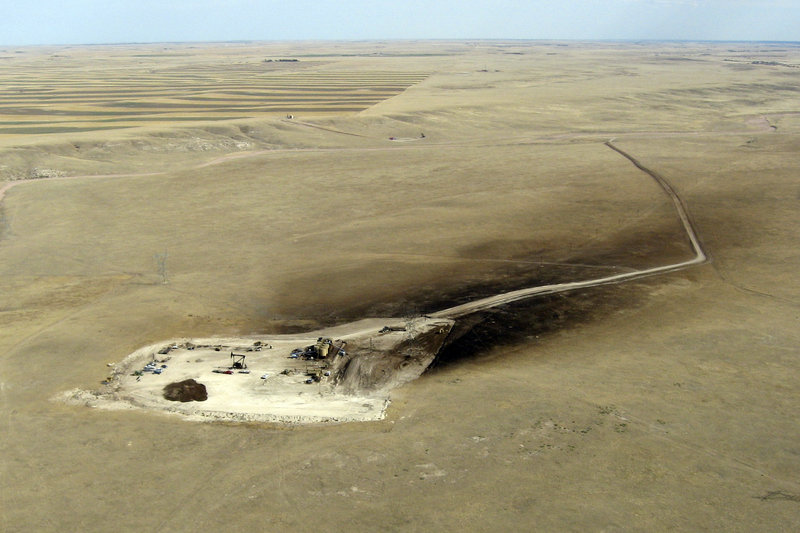A new drilling technique is opening up vast fields of previously out-of-reach oil in the western United States, helping reverse a two-decade decline in domestic production of crude.
Companies are investing billions of dollars to get at oil deposits scattered across North Dakota, Colorado, Texas and California. 2015, oil executives and analysts say, the new fields could yield as much as 2 million barrels of oil a day — more than the entire Gulf of Mexico produces now.
This new drilling is expected to raise U.S. production by at least 20 percent over the next five years. And within 10 years, it could help reduce oil imports by more than half, advancing a goal that has long eluded policymakers.
“That’s a significant contribution to energy security,” says Ed Morse, head of commodities research at Credit Suisse.
Oil engineers are applying what critics say is an environmentally questionable method developed in recent years to tap natural gas trapped in underground shale. They drill down and horizontally into the rock, then pump water, sand and chemicals into the hole to crack the shale and allow gas to flow up.
Because oil molecules are sticky and larger than gas molecules, engineers thought the process wouldn’t work to squeeze oil out fast enough to make it economical. But drillers learned how to increase the number of cracks in the rock and use different chemicals to free up oil at low cost.
“We’ve completely transformed the natural gas industry, and I wouldn’t be surprised if we transform the oil business in the next few years too,” says Aubrey McClendon, chief executive of Chesapeake Energy, which is using the technique.
Petroleum engineers first used the method in 2007 to unlock oil from a 25,000-square-mile formation under North Dakota and Montana known as the Bakken. Production there rose 50 percent in the past year, to 458,000 barrels a day, according to Bentek Energy, an energy analysis firm.
It was first thought that the Bakken was unique. Then drillers tapped oil in a shale formation under South Texas called the Eagle Ford. Drilling permits in the region grew 11-fold last year.
Now newer fields are showing promise, including the Niobrara, under Wyoming, Colorado, Nebraska and Kansas; the Leonard, in New Mexico and Texas; and the Monterey, in California.
“It’s only been fleshed out over the last 12 months just how consequential this can be,” says Mark Papa, chief executive of EOG Resources, the company that first used horizontal drilling to tap shale oil. “And there will be several additional plays that will come about in the next 12 to 18 months. We’re not done yet.”
Environmentalists fear that fluids or wastewater from the process, called hydraulic fracturing, could pollute drinking water supplies. The Environmental Protection Agency is now studying its safety in shale drilling. The agency studied use of the process in shallower drilling operations in 2004 and found that it was safe.
Send questions/comments to the editors.



Success. Please wait for the page to reload. If the page does not reload within 5 seconds, please refresh the page.
Enter your email and password to access comments.
Hi, to comment on stories you must . This profile is in addition to your subscription and website login.
Already have a commenting profile? .
Invalid username/password.
Please check your email to confirm and complete your registration.
Only subscribers are eligible to post comments. Please subscribe or login first for digital access. Here’s why.
Use the form below to reset your password. When you've submitted your account email, we will send an email with a reset code.